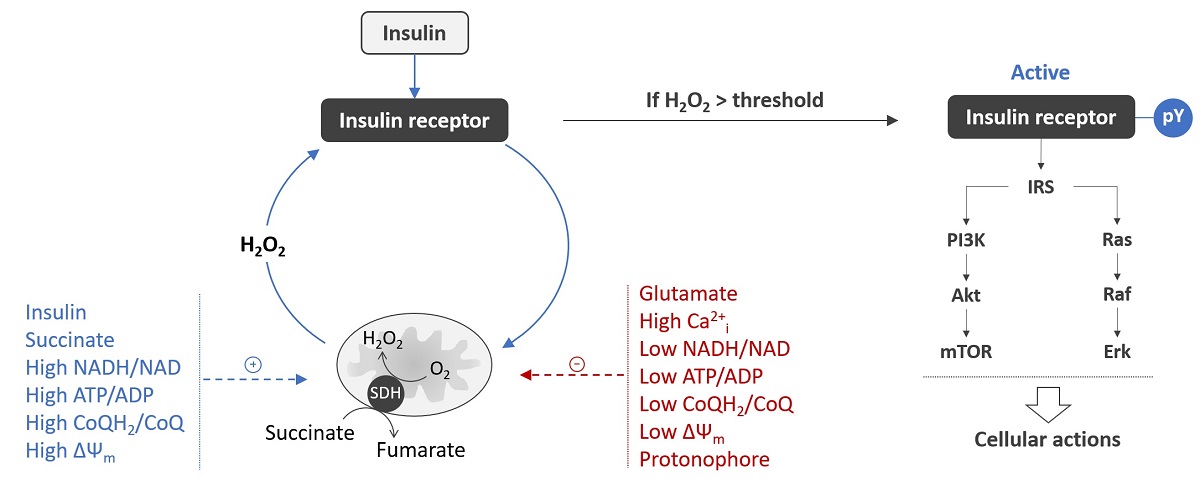Glutamate excitotoxicity is implicated in the pathogenesis of many disorders, including stroke, traumatic brain injury, and Alzheimer’s disease, for which central insulin resistance is a comorbid condition. Massive glutamate release primarily through ionotropic N-methyl-D-aspartate receptors (NMDARs) causes a sustained rise in [Ca2+]i, followed by mitochondrial depolarization and an increase in intracellular O2• (superoxide) production. Recently, we found that insulin protected neurons against excitotoxicity by diminishing the delayed calcium deregulation (DCD), However, a role of insulin in superoxide production in excitotoxicity still needs to be clarified. The present study is aimed to investigate the effects of insulin on glutamate-evoked superoxide generation and DCD using the fluorescent indicators dihydroethidium, MitoSOX Red, and Fura-FF in rats cultured cortical neurons. We found that insulin significantly diminished both the intracellular and mitochondrial superoxide production in neurons exposed to glutamate and there was a strong linear correlation between [Ca2+]i and intracellular superoxide. MK 801, an inhibitor of NMDAR-gated Ca2+ influx, completely abrogated the glutamate effects in both the presence and absence of insulin. In experiments on sister cultures, insulin diminishes neuronal death. Thus, collectively, data obtained suggest that insulin diminishes glutamate-induced superoxide production in neurons via fall of [Ca2+]i increased and thereby improves viability of neurons

